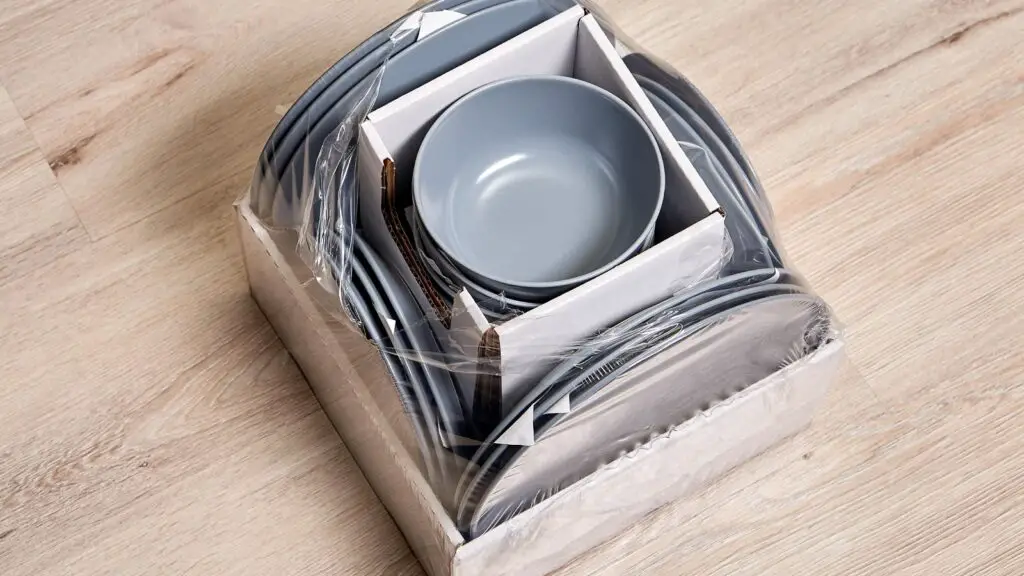Printing technology has come a long way, and nowadays, there are various eco-friendly printing options to choose from. Two of the most popular ones are the eco solvent printer and the UV printer. But when it comes to the battle of eco solvent printer vs UV printer, which one wins? Well, it’s not that simple! Each of these printers has its unique set of benefits and downsides, and the best choice for you depends on your specific needs. Let’s delve into these two sustainable printing options to help you make an informed decision.
What is an Eco Solvent Printer and What is a UV Printer?
An eco solvent printer is a type of large format printer that uses eco solvent inks. These inks are made up of ethylene glycol, which is gentler and more environmentally friendly than other types of solvents. The “eco” in the name indicates that it’s designed with environmental considerations in mind. These printers work by heating the ink until it turns into a gas, allowing it to permeate the printing surface and then cool to a solid form.
On the other hand, UV printers use ultraviolet light to dry or cure the ink as soon as it’s applied to the printing surface. The UV light causes a chemical reaction that instantly hardens the ink, making it stick to the surface. The benefit of this process is that it can print on a wide variety of materials and it doesn’t produce harmful volatile organic compounds (VOCs).
Key Differences between Eco Solvent Printer and UV Printer
- Ink curing process: While eco solvent printers rely on heat to evaporate the solvent and dry the ink, UV printers use UV light to cure the ink instantly.
- Material compatibility: UV printers can print on a wider variety of materials compared to eco solvent printers, including glass, plastic, and metal.
- Print speed: UV printers typically have faster print speeds since the UV light cures the ink immediately.
- Environmental impact: Eco solvent printers are generally more eco-friendly due to the use of milder solvents in the inks, while UV printers eliminate the issue of VOCs.
- Cost: UV printers can often be more expensive upfront, but their ability to print on a wider variety of materials may offset the initial cost over time.
Key Similarities between Eco Solvent Printer and UV Printer
- Large format printing: Both eco solvent printers and UV printers are often used for large format printing, including banners, posters, and signage.
- Full-color printing: Both types of printers can produce full-color, high-resolution images.
- Durability of prints: The prints from both eco solvent and UV printers are highly durable, resistant to water, and don’t fade easily.
- Suitable for outdoor use: The prints from both types of printers are suitable for outdoor use due to their durability and resistance to weather.
- Necessity for proper ventilation: Both eco solvent printers and UV printers need to be used in well-ventilated spaces due to the nature of the inks and the curing process.
Pros of Eco Solvent Printer Over UV Printer
- Eco-friendliness: Eco solvent printers use inks that are less harmful to the environment as compared to other types of inks. This is a win for all of us making eco-friendly choices!
- Cost-effectiveness: In general, eco solvent printers can be less expensive to purchase and maintain than UV printers, which can make them a more budget-friendly option.
- Versatility in finishes: Eco solvent printers offer different finishes – glossy or matte – giving you the flexibility to choose the best finish for your project.
- Ease of handling: The prints from eco solvent printers are easy to handle, they are less prone to scratching and require no special handling once they’re dried.
- Suitability for heat-sensitive materials: Since eco solvent printers use heat to dry the ink, they’re typically a better choice for heat-sensitive materials as they use less heat than other types of printers.
Cons of Eco Solvent Printer Compared to UV Printer
- Longer drying times: The prints from an eco solvent printer take longer to dry than those from a UV printer because the solvent needs time to evaporate.
- Limited materials: Eco solvent printers are limited in the types of materials they can print on, unlike UV printers which can print on a variety of non-porous materials.
- Ventilation requirement: Even though the solvents are less harmful, eco solvent printers still need to be used in well-ventilated areas due to the fumes produced during the printing process.
- Less vivid color: While the prints from eco solvent printers are still of high quality, the colors might not be as vivid as those produced by UV printers.
- Ink durability: While still durable, the prints from an eco solvent printer may not be as resistant to scratching and weather conditions as those from a UV printer.
Pros of UV Printer Over Eco Solvent Printer
- Instant drying: Thanks to the UV curing process, UV printers dry inks instantly. This speeds up the overall printing process, saving you valuable time.
- Vibrant colors: UV printers are known for their vibrant and highly detailed print quality. If color accuracy is important to you, UV printers can be an excellent choice.
- Broad material compatibility: UV printers can print on a wide array of materials, from plastic and glass to wood and metal. This opens up a world of creative possibilities!
- Reduced environmental impact: UV printers do not produce harmful volatile organic compounds (VOCs), which is a huge plus for our planet.
- Increased durability: Prints from UV printers are incredibly durable. They are resistant to water, scratches, and the effects of sun exposure, making them ideal for outdoor use.

Cons of UV Printer Compared to Eco Solvent Printer
- Higher initial cost: UV printers can have a higher upfront cost compared to eco solvent printers. However, the cost might be offset over time by the printer’s versatility and durability.
- Special handling requirements: UV printed materials often require special handling due to the instant hardening of the UV-cured ink. Without proper handling, the printed material might get damaged.
- Higher power consumption: UV printers generally consume more energy than eco solvent printers, which might add to your power bills and environmental footprint.
- Potential for ink distortion: While UV printers are capable of printing on a wide variety of materials, certain surfaces might cause the ink to spread or distort.
- Risk of UV exposure: Despite safeguards, there is always a slight risk of exposure to UV radiation when using UV printers. It’s crucial to follow safety guidelines while operating these machines.
Situations When Eco Solvent Printer is Better Than UV Printer
- Budget constraints: If you are working with a limited budget, an eco solvent printer might be a better choice due to its lower initial and operational costs.
- Print on heat-sensitive materials: Eco solvent printers use less heat, making them more suitable for printing on heat-sensitive materials.
- Flexibility in finishes: If your project requires a choice between glossy or matte finishes, an eco solvent printer offers this flexibility.
- Requirement for gentle inks: If you’re concerned about the environmental impact of the inks used, eco solvent printers utilize milder, less harmful solvents.
- Easier handling of prints: If the prints will need to be handled frequently, such as in a retail setting, the output from eco solvent printers is less prone to scratching and requires no special handling once dried.
Situations When UV Printer is Better Than Eco Solvent Printer
- Fast production times: If you need to print materials quickly, the UV printer’s instant curing process reduces wait times and increases productivity.
- Vibrant and precise color requirements: When color accuracy and vibrancy are crucial, the UV printer stands out with its ability to produce highly detailed and colorful prints.
- Wide material compatibility: If you want to print on non-porous or unusual materials such as glass, metal, or plastic, the UV printer’s versatility makes it a superior choice.
- Outdoor use: For prints that will be displayed outdoors and exposed to the elements, UV printers offer high durability, resistance to water, and sun-fade protection.
- Reduced VOC emissions: If minimizing volatile organic compound (VOC) emissions is a priority, UV printers hold an advantage as they produce no VOCs during the printing process.
Eco Solvent Printer vs UV Printer Summary
In the journey to more sustainable printing, the eco solvent printer and the UV printer both play vital roles. Understanding the differences, similarities, pros, and cons of each can help you decide which one best aligns with your eco-friendly goals and printing needs. Remember, it’s not just about which printer is better in the eco solvent printer vs UV printer debate, but which printer is better for you and your commitment to making more eco-friendly choices in your daily life. Choose wisely, print sustainably, and make a positive impact on our planet.
| Eco Solvent Printer | UV Printer | |
|---|---|---|
| Ink Curing Process | Uses heat to evaporate the solvent and dry the ink | Uses UV light to instantly cure the ink |
| Material Compatibility | Limited to certain types of materials | Can print on a wider variety of materials including glass, plastic, metal |
| Print Speed | Generally slower due to drying times | Faster due to instant UV curing |
| Environmental Impact | More eco-friendly due to milder solvents | No VOC emissions |
| Cost | Typically less expensive | Often more expensive upfront |
| Large Format Printing | Yes | Yes |
| Full-color Printing | Yes | Yes |
| Durability of Prints | Durable, but may be less resistant to scratching | Highly durable and resistant to scratching and weather |
| Outdoor Use | Yes | Yes |
| Ventilation Requirement | Yes | Yes |
| Pros | Eco-friendly, cost-effective, flexibility in finishes, ease of handling prints, suitable for heat-sensitive materials | Instant drying, vibrant colors, broad material compatibility, reduced environmental impact, increased durability |
| Cons | Longer drying times, limited materials, ventilation requirement, less vivid colors, ink less durable | Higher initial cost, special handling requirements, higher power consumption, potential for ink distortion, risk of UV exposure |
| Better When | Budget constraints, printing on heat-sensitive materials, flexibility in finishes required, need for gentle inks, easier handling of prints | Fast production times, vibrant and precise color requirements, wide material compatibility, outdoor use, reduced VOC emissions |




